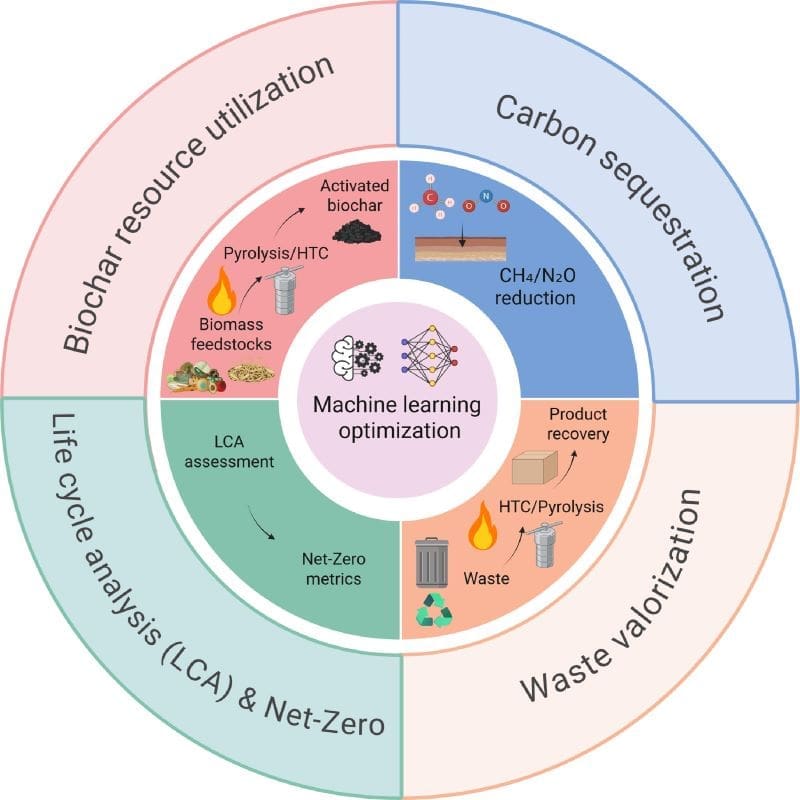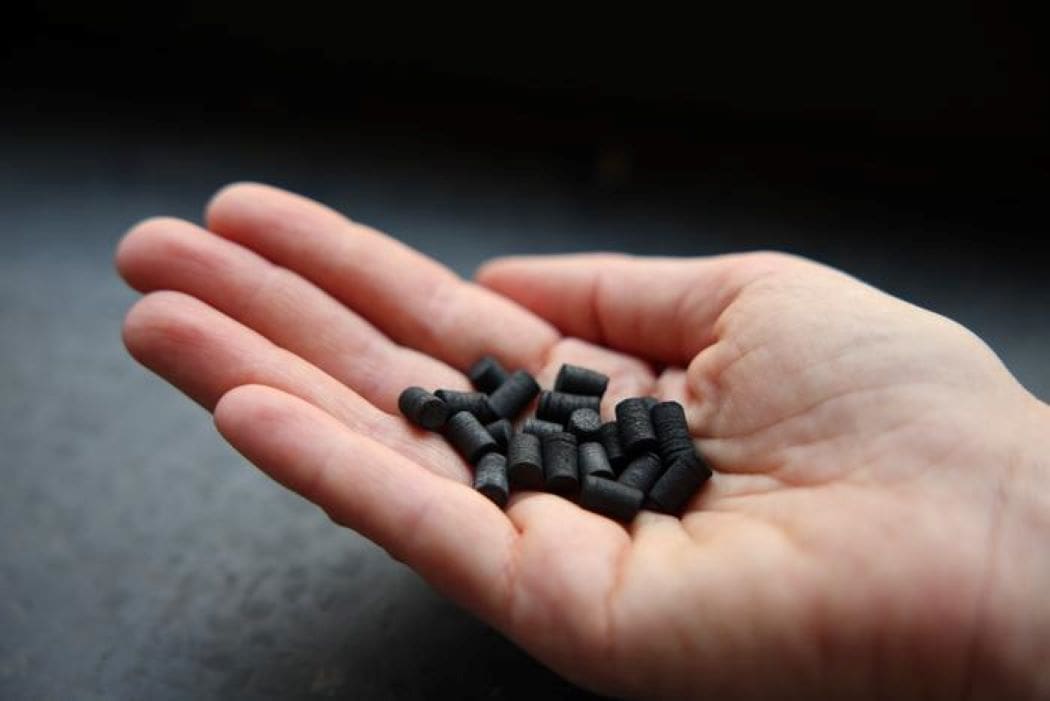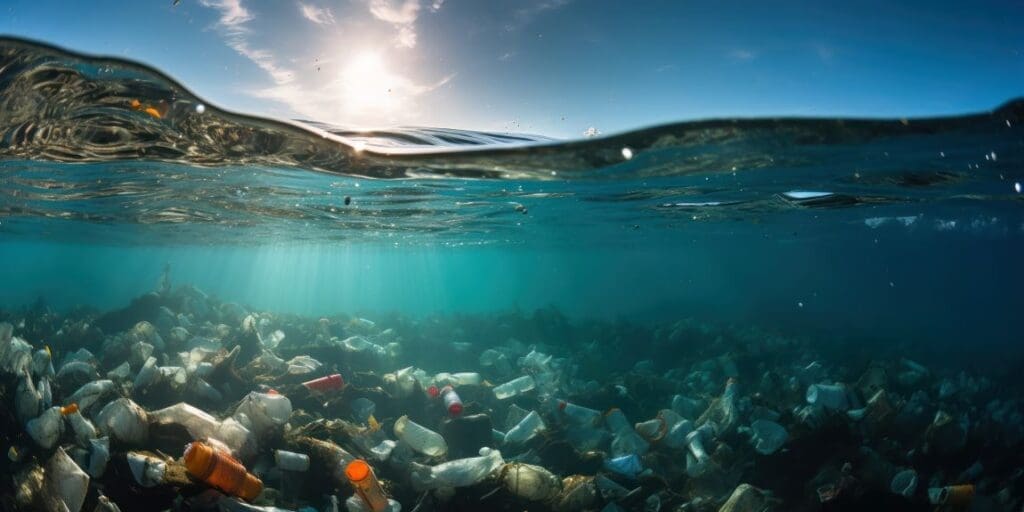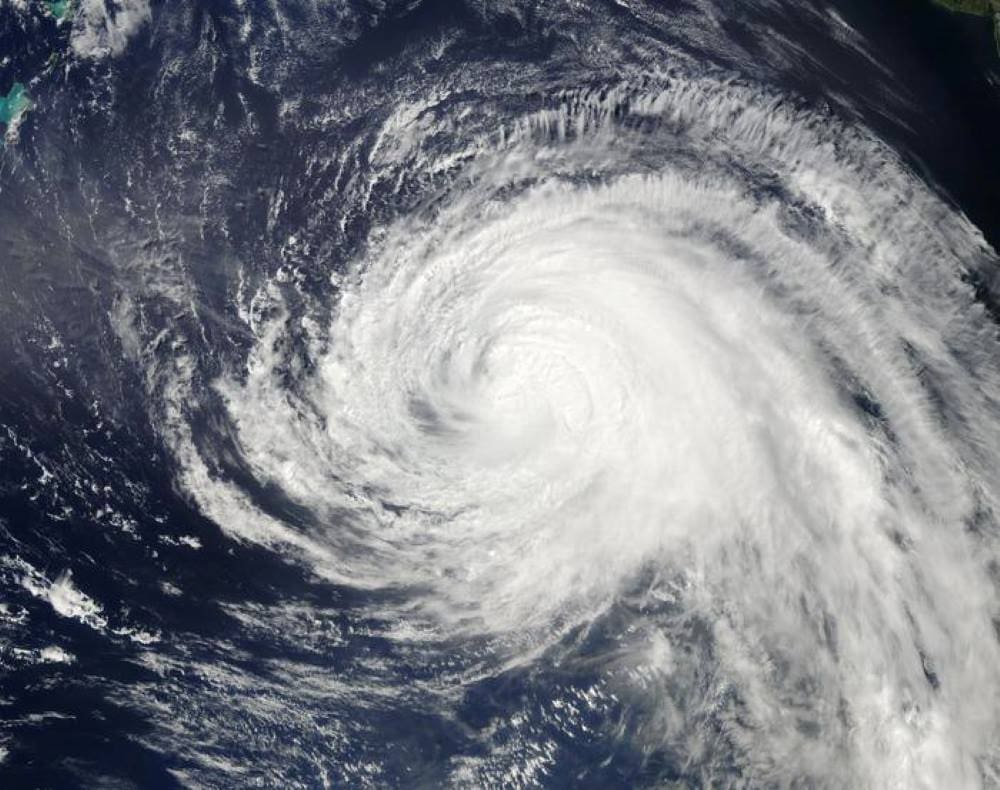Summary:
Biochar, a carbon-rich material produced from organic waste, is gaining attention for its ability to improve soils, clean water, and capture carbon. A recent review published in Biochar X shows how machine learning (ML) is helping researchers accelerate biochar studies and design more efficient solutions for climate mitigation and resource recycling.
ML models such as random forests and deep neural networks can predict biochar yield, surface area, and pollutant removal efficiency with over 90% accuracy. This approach reduces the need for costly trial-and-error experiments and enables the development of biochars with tailored properties for environmental applications.
The review highlights that biochar use can reduce greenhouse gas emissions by 20%–70% and sequester up to 90% of carbon, depending on feedstock and production conditions. It also examines emerging techniques, including deep learning, multi-objective optimization, and self-supervised learning, which are expected to further enhance biochar’s environmental benefits and support the circular economy. Challenges remain in data sharing, model interpretability, and interdisciplinary collaboration, but ML integration is already showing strong potential to improve design efficiency and environmental performance.

Machine learning accelerates biochar research to cut carbon emissions and recycle waste
Biochar, a carbon-rich material made from organic waste, is gaining attention for its ability to improve soils, clean water, and capture carbon. A new review in Biochar X highlights how machine learning (ML) is reshaping biochar research, making it faster, smarter, and more effective in tackling climate change.
By analyzing large datasets, ML models such as random forests and deep neural networks can predict biochar yield, surface area, and pollutant removal efficiency with over 90% accuracy. This reduces costly trial-and-error experiments and allows scientists to design biochars with tailored properties for environmental applications.
“Biochar has enormous potential as both a waste-to-resource pathway and a climate solution,” said corresponding author Tao Zhang of China Agricultural University. “Machine learning gives us powerful tools to accelerate its development and maximize its environmental benefits.”
The review finds that biochar use can cut greenhouse gas emissions by 20%–70% and sequester up to 90% of carbon, depending on production conditions. Beyond climate mitigation, engineered biochars are being applied to clean polluted water, remove heavy metals and organic contaminants, capture microplastics, and even strengthen construction and energy storage materials.
The authors note that challenges remain, including the need for better data sharing, standardized reporting, and closer collaboration between environmental scientists and AI experts. Emerging techniques such as deep learning, self-supervised learning, and life cycle assessment are expected to further enhance the role of biochar in achieving global carbon neutrality and supporting a circular economy.
“This integration of machine learning and biochar is a clear example of how digital technologies can drive green innovation,” Zhang said.
Journal Reference:
Jiang Y, Xie S, Abou-Elwafa SF, Mukherjee S, Singh RK et al., ‘Machine learning-enabled optimization of biochar resource utilization and carbon mitigation pathways: mechanisms and challenges’, Biochar X 1: e002 (2025). DOI: 10.48130/bchax-0025-0003
Article Source:
Press Release/Material by Biochar Editorial Office | Shenyang Agricultural University (SYAU)
Featured image credit: GEUS




